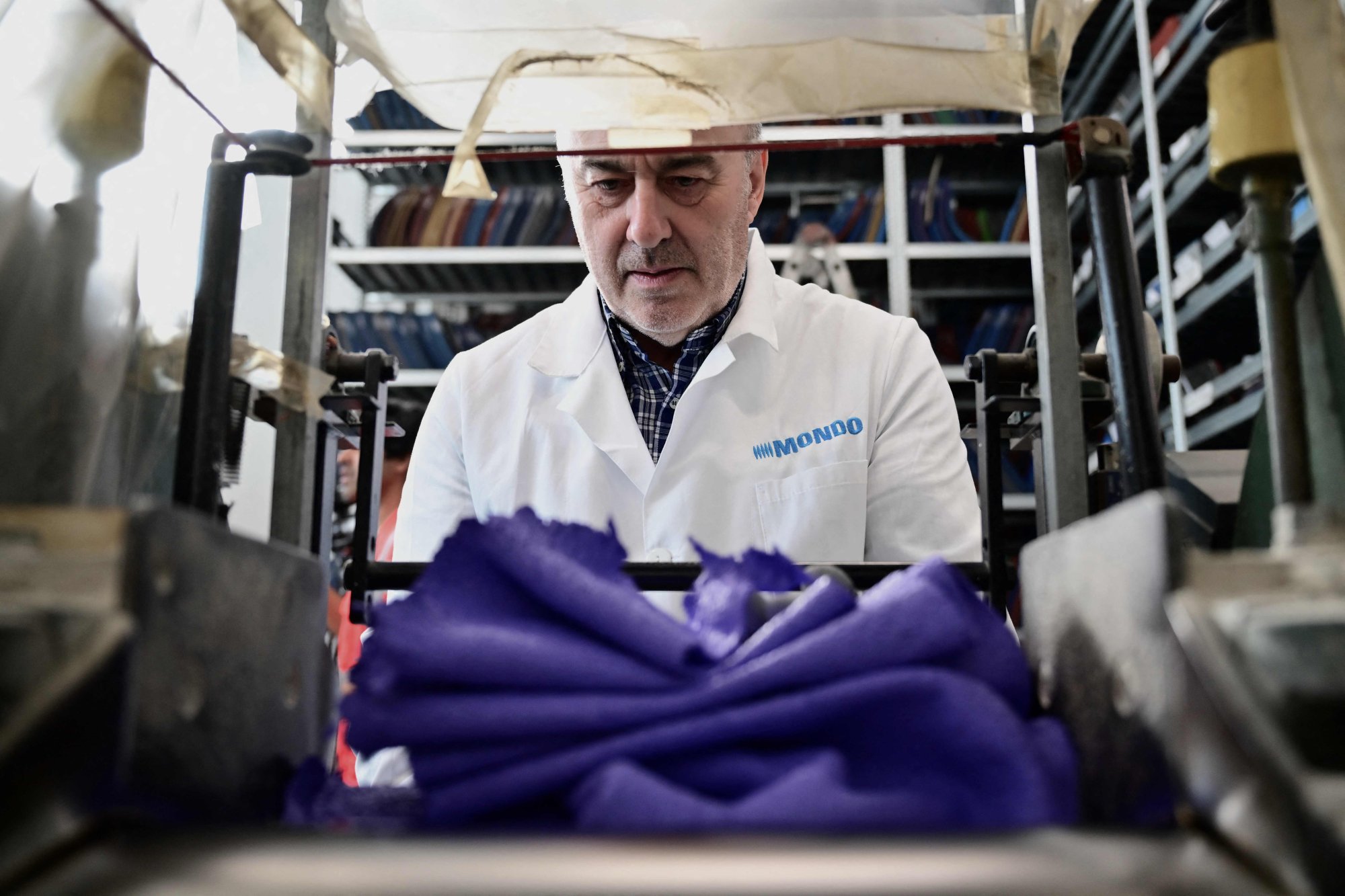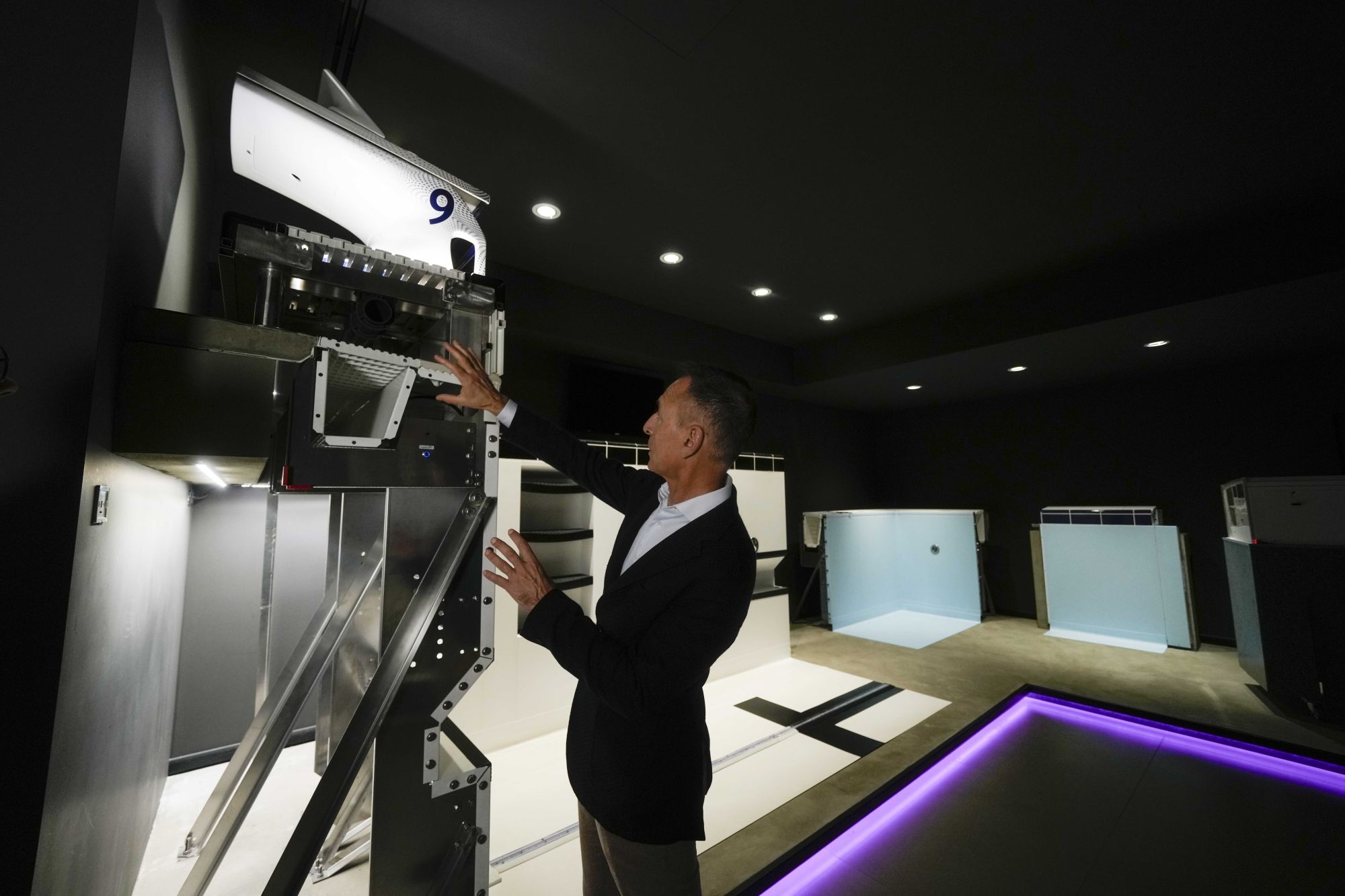
Paris Olympics: algorithms and purple rubber, here’s why you might see a lot of records on the track and in the pools
- Italian company that has produced Games track since 1976 went back to drawing board after Tokyo Olympics
- Athlete feedback and extensive testing aiming to help competitors run faster, jump higher and leap further
The purple pieces of vulcanised rubber track being produced at a factory in northern Italy will be run on by the world’s fastest athletes at the Paris Olympics.
They have been made with one clear goal. Records.
After three world records and 12 Olympic marks were set on the track in Tokyo three years ago, expect more records to fall at the Stade de France.
That’s why Mondo, the company that has provided the track at every Summer Games since Montreal in 1976, went back to the drawing board after the Japan edition.
With the help of athlete feedback and extensive testing, new generation granules that are more elastic and cohesive are being used to produce the upper layer of rubber for the Paris track.

Multiple algorithms were explored before finding a more optimal shape and dimension for the air cells inside the track, which have been designed to minimise energy loss and enhance performance.
In other words, the innovations are meant to enable Olympians to run faster, jump higher and leap further. Kind of like the Olympic motto: “Faster, higher, stronger – together.”
“The athletes will find this track to be more reactive and better suited for their competition,” Maurizio Stroppiana, vice-president of Mondo’s sport division, said.
Produced in portions over two days this week and then rolled up for transport to France, the track will be installed at the Stade de France next week, weather permitting.
It will mark the third time that Mondo has installed a new track at the Stade de France, which hosted the athletics world championships in 2003.
“It’s laid on the asphalt base and it’s glued in place,” Stroppiana said. “It’s a fairly quick process. We’re going to work 24 hours and overnight because of the limited time available and the weather.”
Another novelty for Paris is the colour of the track, which will be purple for the first time at an Olympics.
“The colour was a courageous decision of the local organising committee,” Stroppiana said. “We have never done this colour before. It’s a light mauve and darker violet. It sort of recalls the landscape of France.”

A three-hour drive across the country is the headquarters of another Italian company and supplier for big-time Olympic sports, Myrtha Pools.
Including training facilities, Myrtha is making 24 pools for swimming, diving, water polo and artistic swimming in Paris.
It’s the sixth Olympics that Myrtha will be providing pools for.
For the swimming races at La Defence Arena, Myrtha is installing two temporary pools inside the rugby stadium – one for competition and one for warm-ups and training.
Stainless steel modules being produced at the Myrtha factory in Castiglione delle Stiviere near Verona will be transported to France and bolted together to form the pool walls and floors.
Roberto Colletto, the Myrtha CEO, said building temporary pools was “a big advantage because this allows us to reinstall the pools after the event”.
For example, the pools used at the Tokyo Olympics in 2021 – when six world records were set in swimming – were reused for the world championships in Fukuoka last year and reinstalled again at local schools in Japan.
Beyond the pool walls and floors, water treatment has added significance for Olympic pools.
“Transparency of water is very important because of the underwater TV cameras, especially now with the high definition, they need extreme transparency,” Colletto said.
“In order to achieve this we have developed a specific filtration and water treatment system. And we also have a variable speed bump system that will accelerate or reduce the speed of the water, depending on the competition mode or non-competition mode.”

